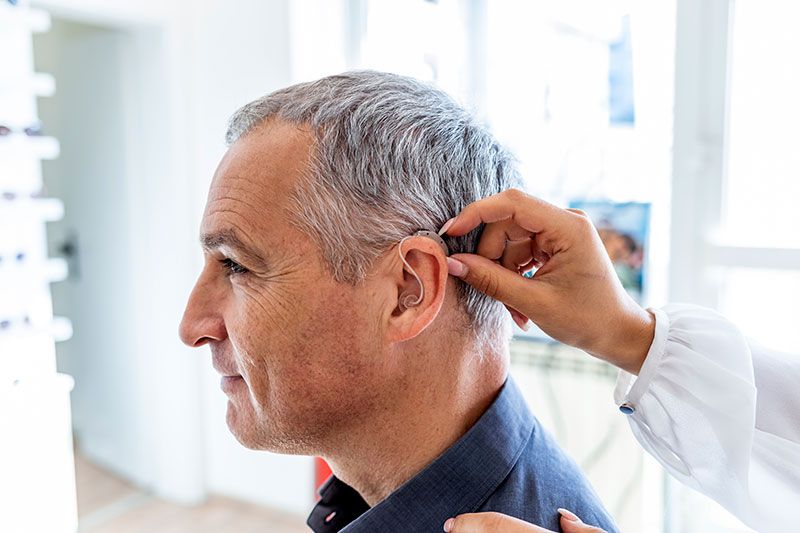Are you facing a challenge understanding those speaking around you when there is a lot of background noise? We know that hearing loss is already a challenge–coupled with background noise, it can be hard and exhausting to hear in these environments. If you are struggling to hear when wearing your hearing aid in a noisy environment, chances are that you are using an older style hearing aid.

Omni-Directional Microphones: The Old Way
When we mention older style hearing aids, we are referring to devices that use omni-directional microphones. Being omni-directional, these microphones amplify all noises equally, making your friend’s words during a conversation at a restaurant just as loud as the clash of cutlery or the clinking of glasses from 4 tables away. While omni-directional microphones work fine in quiet places (no other sounds to amplify except the sounds you want to hear), if you are in a noisy setting, such hearing aids no longer work effectively, and in fact, cause you more exhaustion.

Meet the Latest Hearing Aid Technologies That Fight Background Noise
While there isn’t any technology that can completely shut out background noise, there are new ways in which background noise can be significantly reduced. Here are three types of technologies to look for if you’re looking for hearing aids that can help fight and minimize background noise:
- Directional microphones
- Digital signal processing
- FM and wireless technology

Directional Microphones
Directional microphones are the opposite of omni-directional. Instead of amplifying everything, directional microphones focus only in a certain area (within your visual range). There are simple directional microphones that work very similar to bifocal glasses. When you look straight, that is the area the sound is amplified. When you turn your head and face the person who is speaking to you, their sound is amplified. There is also an advanced type, called adaptive directional microphones. These work together with your hearing aid’s noise reduction technology, allowing you to hear those speaking at your side, without needing you to face them to hear them clearly. Whether you use simple or adaptive directional microphone technology, unwanted background noise is greatly minimized.

Digital Signal Processing
Digital signal processing is another technology that greatly reduces the background noise you hear while wearing your hearing aid. Digital signal processing takes the sounds entering the microphone and converts them into digitized codes. Using mini-computer chips, your hearing aid then proceses over 40 million calculations to enhance speech sounds and reduce unhelpful noise.

FM and Other Wireless Technology
A third technology to help with reducing background noise is FM compatibility and other wireless technologies such as Bluetooth. Basically, using these technologies, you can connect your hearing aid to an external microphone. By doing this, hearing in noisy environments is dramatically improved because now the signal is received directly into the hearing aid processor and bypasses its microphone.

Which Background Noise Reduction Is Best For Me?
Everybody’s budget and lifestyle are different. We carry many styles of hearing aids that use these latest technologies. Book an appointment at one of our hearing clinic locations; we’re here to help you find a hearing aid that fits your lifestyle.
